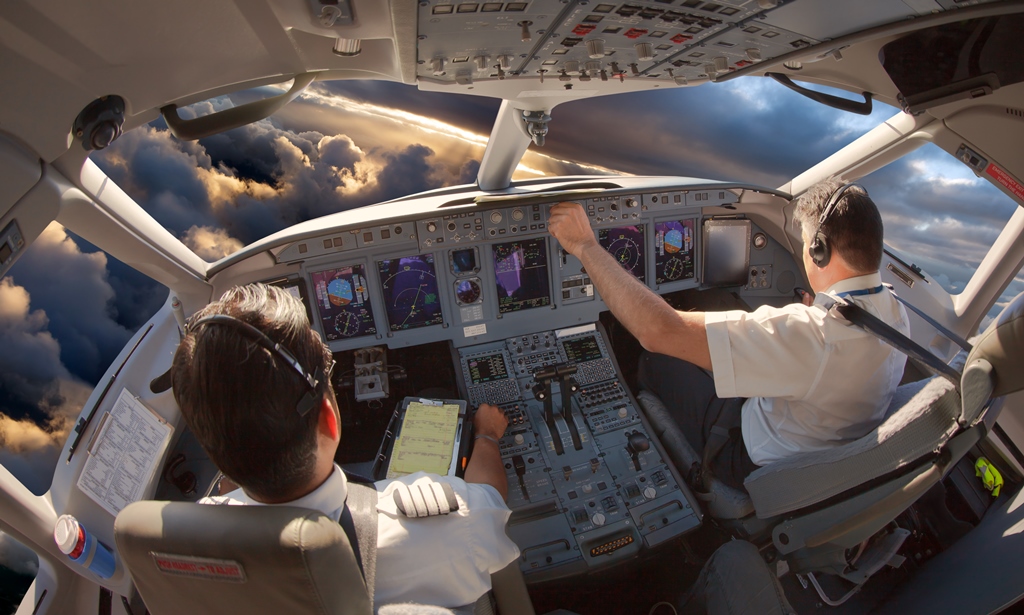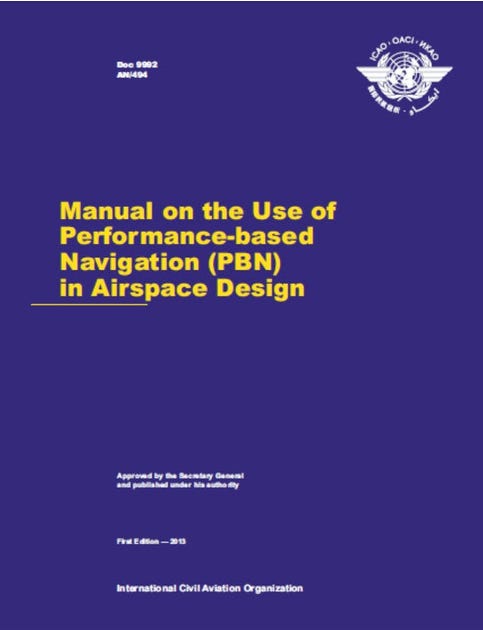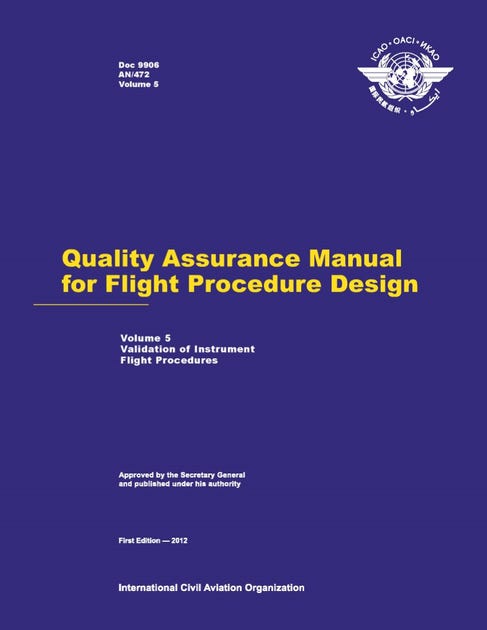The COVID-19 pandemic has brought a significant decrease in domestic, regional, and international air traffic volumes. Before this crisis, ICAO declared that the implementation of Performance-Based Navigation (PBN) flight procedures was a priority for air navigation. This reality all over the world had various, effective results. More than ever, air navigation needs safer, greener, and more cost-effective flight procedures for our airports; PBN is key in this.
With the expected overall decrease in traffic and workload, States should use this period to speed up and ease the ICAO PBN implementation objectives’ achievement for the benefit of all aviation stakeholders. Lessons learned from the past show key points that could hamper the process of this implementation, often due to no or few available workforces, skilled staff, lack of preparation or experience, unreliable data, lack of finances, and sometimes, just the fear to change.
Today, there is no other choice: changes must happen now and must be supported by concerned stakeholders for a sustainable future. So, how can we make it happen within technical and regulatory domains?
First: what is PBN?
The PBN concept is a global initiative by ICAO. It is considered a significant change in air navigation, shifting from conventional ground-based navigation to a more efficient, flexible, green, and affordable navigation system, primarily based on Global Navigation Satellite System (GNSS). At the 37th ICAO General Assembly in 2010, Resolution number A37-11 was adopted, urging States to implement the PBN concept for all instrument runway ends in the world by the year 2016. Since then, many instrument runway ends were provided with PBN flight procedures (arrival, approach, and departure), from simple to more complex procedure types. Accessibility to challenging airports was increased within safer conditions than before.
A lot still needs to be done, and all PBN benefits have not been fully exploited yet.
What are the potential benefits of PBN for greener flights?
- Environmental impact and cost-efficiency
- Less fuel burn (reduced CO2 emissions and fuel costs);
- Less impact of aircraft noise (stabilised paths and area avoidance);
- Low investments (reduced investment in ground-based systems and associated costs);
- Less operating costs; and
- Supports UN sustainability goals.
Safety improvement
- More stabilised approach paths for APVs (Approach Procedures with Vertical guidance);
- Predictable and repeatable flight paths;
- Less pilot and controller workload (fewer radio transmissions; fewer communication errors, greater predictability, fewer go-arounds, less time in flight);
- Reliable and accurate; and
- More safety culture.
Capacity and accessibility optimisation
- More efficient use of airspace and higher capacity (shorter and more direct routes; less time in flight, less congestion, fewer airspace conflicts);
- More efficient operations (continuous climb and descent operations, fewer constraints);
- More efficient support to trajectory-based operations; and
- More accessibility (even at the most challenging airports in all weather-operations).

What are the challenges in accelerating PBN implementation?
Worldwide, the implementation of PBN flight procedures is not always easy and fast. Several challenges can occur, often due to the lack of knowledge and experience of the stakeholders. Operational and cultural difficulties when shifting from conventional navigation to PBN navigation in daily operations are often at the origin of observed delays.
 Equipping instrument runways with PBN flight procedures is an excellent start to improving flight procedures safety and runways accessibility. Still, it is not enough to take full advantage of PBN potential features. PBN is much more beneficial when the entire airspace, particularly the terminal areas (TMAs), are redesigned by shortening the distances and optimising flight profiles through continuous descent and climb operations (CDO/CCO). The framework becomes broader, the workload becomes higher, and extensive skills are required that are often missing.
Equipping instrument runways with PBN flight procedures is an excellent start to improving flight procedures safety and runways accessibility. Still, it is not enough to take full advantage of PBN potential features. PBN is much more beneficial when the entire airspace, particularly the terminal areas (TMAs), are redesigned by shortening the distances and optimising flight profiles through continuous descent and climb operations (CDO/CCO). The framework becomes broader, the workload becomes higher, and extensive skills are required that are often missing.
ICAO’s Carbon Offsetting and Reduction Scheme for International Aviation (CORSIA) relies on the use of emissions units from the carbon market to offset the amount of CO2 emissions that cannot be reduced through the use of technological and operational improvements, and sustainable aviation fuels. Many States are calculating CO2 emissions; PBN implementation is a good opportunity for obtaining better CO2 emissions results, but it requires the training and involvement of national experts.
Aircraft noise is a major issue for the population living in an airport vicinity. PBN trajectories are more precise than conventional ones and make it easier to adapt to the overflight of inhabited areas as required for improved noise calculation results.
To obtain these benefits, a new PBN airspace design must be accompanied by a modern and efficient Air Traffic Management (ATM) system that makes the best use of the navigational equipage capabilities of modern aircraft to try to achieve the perfect flight whenever possible. Each element is necessary to reach the target; otherwise, operations would be under-exploited, as is often the case nowadays.
When necessary, the Flexible Use of Airspace (FUA) concept should be applied to optimise the airspace management between civilian and military control organisms. Everyone must own his/her responsibilities for the sake of national and regional economic interests.
These changes should be preceded by consistent safety studies and ultimately reduce the operational workload while entrenching a real and lasting safety culture.
What are the challenges for ICAO SARPs and National regulations?
ICAO published requirements in Annex 11, detailed in Document 10068, that relate to flight procedures implementation under the responsibility of the Regulatory bodies.
In recent years, several ICAO Annexes and Documents were created or updated. The need for guidance, clarification, and assistance is pressing from the stakeholders. The COVID-19 recovery period could be used to acquire full comprehension of requirements and regulatory/technical documentation edited by ICAO, and consequently, update or develop National documentation, including the PBN National Implementation Plan when necessary.
In the technical domain, a lot has been already done, but more remains to be carried out, particularly in the PANS-OPS field. PBN procedures provide more precise aircraft positions on a trajectory than conventional navigation. The publication of Required Navigation Performance with Authorisation Required (RNP AR) departure criteria, and Area Navigation (RNAV) visual criteria will significantly improve safety, trajectory options, and optimise the operations.
Today, besides the lack of published criteria, several RNP AR departures were designed, validated, approved, and published in several challenging airports. It is also important to note that new procedures can impact local economies in-depth, through more efficient and less costly operations.
What are the challenges for Air Navigation Service Providers (ANSP)?
Service and Staff
As required by ICAO, flight procedures design services should be placed under the responsibility of the regulatory body. They will be operated by the ANSP or a similar service regarding the design and operational activities.
The development of instrument flight procedures and airspace design requires regular updates of knowledge, consistent project experience, and substantial time dedicated to the experts. Unfortunately, at least one of these conditions is often missing; it is complicated for most ANSPs to comply with all requirements simultaneously. A call for design expertise from external operators is another means for improving implementation capability and capacity.
Data
Performance-based navigation specifications require data, such as runway thresholds, navigation aids when needed, and obstacles, with the right level of accuracy, resolution, integrity, traceability, timeliness, completeness, and format. Also, local statistical data parameters, since the wind tables at different altitudes in the airports’ vicinity, could significantly help to optimise the development of the procedures and avoid unnecessary deviations to the design criteria that could slow down or, even worse, make impossible some studies.
Safety management system
Despite the strong recommendations by ICAO to establish an efficient Safety Management System (SMS), in addition to dedicated and trained staff, there remain significant deficits, in particular, concerning the data collection of the safety operational events, the analysis, and the exchange in some ANSPs.
During the airspace design process, the exploitation of the known safety issues, the safety assessment of the PANS-OPS criteria deviations when applicable, the risk assessments related to expected changes and the monitoring of potential events due to changes, are essential for safe and successful project implementation. These are crucial steps that must not be underestimated.
Instrument Flight procedures (IFPs) publication and maintenance
The publication of the IFPs in the National Aeronautical Information Publication (AIP) is the visible, and the operationally useful part of the implementation for the stakeholders. It represents as much as the maintenance process, a guarantee of safe flight procedures.
What are the challenges for Air Operators?
Air Operators should consider better-equipped fleets to obtain greener flights.
The latest PBN technological improvements introduced a new generation of greener aircraft with possible and less costly certifications for stringent RNP values. However, it implies continuous training for pilots to maintain high-level expertise.
Today, non-certified aircraft need a deep and expensive retrofit to fully benefit from the navigation specifications of the PBN. For the operators that do not have the luxury to acquire the latest aircraft generation, the industry should facilitate and make more accessible, these new technologies through fleet retrofit as soon as possible.
What are the challenges for Civil Aviation Authorities?
The process for the IFPs implementation must be detailed in the national documentation related to their implementation.
 The main issue for the Civil Aviation regulatory bodies is the time needed to fully implement a flight procedure. Since PBN is a navigation concept with new and complex operational contents that are sometimes not very well mastered, additional delays could occur. The situation could become critical, given the obtained benefits from the PBN implementation.
The main issue for the Civil Aviation regulatory bodies is the time needed to fully implement a flight procedure. Since PBN is a navigation concept with new and complex operational contents that are sometimes not very well mastered, additional delays could occur. The situation could become critical, given the obtained benefits from the PBN implementation.
Published PBN design criteria usually describe simple configurations. When these criteria can not be applied, deviations to the rules are studied, analysed, tested, and the safety is assessed to demonstrate the flyability and the safety of the new design in accordance with ICAO Document 9906 requirements.” These changes do not permit enough time, efficient training, and experience for the inspection staff to react adequately to the newly designed optimised procedures. As a result, the technical validation and regulatory approval processes could take several months to several years in some cases due to the lack of knowledge and the consideration of difficult, costly, and unnecessary conditions to some stakeholders.
To simplify and speed up the implementation of new PBN procedures and designed airspaces, the regulator must be in the loop of the implementation project from the beginning of the process. The regulatory body is responsible for the project and organises the role of each technical and regulatory entity involved in each step of a project development process. Moreover, regulators should be providing more in-depth through consistent on-site training. Attending workshops is the minimum but is not enough for sustainable knowledge exchange and efficiency improvement for the time reduction of the validation and the implementation. The sooner, the implementation is done through a safe and balanced process, the faster the aviation community will benefit from safer and greener flight procedures and airspaces.
Once the necessary knowledge and experiences of the service provider are acquired and recognised by the regulator, the global validation and approval process should be simplified to speed up the implementation.
Conclusion
The two last decades witnessed multiple changes and improvements in our skies. However, it highlighted many perfectible points that unfortunately barely changed, and ultimately became blocking points for the expected change timeline.
The decrease of air traffic in the coming months and perhaps years creates an unprecedented opportunity to implement faster the inevitable need of safer and greener new PBN designed airspaces that will genuinely transform aviation and meet the real challenges of the 21st century, in accordance with the ICAO objectives for PBN implementation and the United Nations sustainability goals. Everyone has a role to play to ensure a long-term and efficient come back of the aviation in the post-COVID-19 era.
About the authors
Frederic Legrand is a former ICAO African Flight Procedure Program (AFPP) Manager
Amine Bach Chaouch is an ICAO TCB Instrument Flight Procedure & Airspace Design Expert



